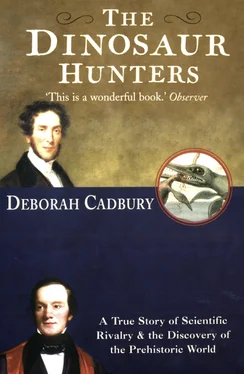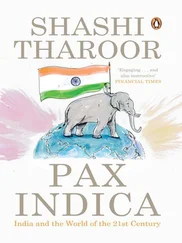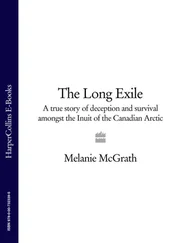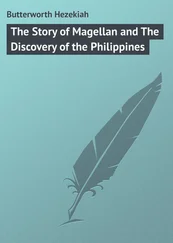Since his family was wealthy, with a large estate in Scotland, Lyell had an independent income and more leisure for geology than Mantell. The following day, while Mantell was visiting patients, he went to explore the Sussex strata and then returned to Castle Place: ‘to have tea at six o’clock,’ Mantell wrote. ‘My few drawers of fossils were soon looked over, but we were in gossip until morning.’ The visit marked the beginning of an enduring friendship between these two men, both hoping to make a career from geology.
Although there is no record of their conversation over these two days, there is evidence that Lyell told Mantell of Buckland’s giant reptile in the Ashmolean Museum and they compared the Stonesfield fossils in Oxfordshire with those of Cuckfield in Sussex. Fired by these discussions, soon after leaving, Lyell lost no time in visiting Stonesfield to obtain a boxful of fossils that he despatched to the Lewes wagon office. Three weeks later, on 25 October 1821, Mantell wrote in his diary: ‘received an interesting collection of Stonesfield fossils from Mr Lyell; in many respects they resemble those of Cuckfield’.
Charles Lyell’s news of the huge reptilian bones in Oxford confirmed for Mantell that his fossils were not just of provincial interest. He learned not only that Georges Cuvier had concluded that the Stonesfield beast was a reptile, but also that it was at least forty feet long and as bulky as an elephant. Armed with this information, Mantell felt that his own speculations of giant lizards buried in the Weald did not seem quite so preposterous. He could now attempt to classify his own fossils by seeing which bore most resemblance to the giant Oxford lizard.
About this time, Mantell almost certainly heard from Lyell of William Buckland’s intention to publish a detailed paper on the Stonesfield reptile. Since Buckland, the famous Regis Professor, was planning to describe and name the new carnivorous lizard, it was hardly appropriate for the unknown Mantell to claim this opportunity for himself. However, no one had reported anything like the unidentified herbivorous teeth. Mantell felt, therefore, that he could be the first to identify this animal, new to science, and claim the recognition, without interfering in Buckland’s study.
Patiently taking advantage of any introduction he could negotiate, Gideon Mantell sent a prospectus of his planned book on the geology of Sussex to members of the landed gentry, inviting them to subscribe for copies. The Earl of Chichester, the Bishop of Durham, the Earl of Egremont and numerous others replied; in all he attracted two hundred subscribers. Better still, in 1821 an envelope arrived from Carlton House Palace. Mantell broke the royal seal, and read: ‘His Majesty is pleased to command that his name should be placed at the head of the subscription list for four copies.’ Quite how George IV had heard of the book is unclear; Mantell wrote back simply, ‘I am indebted to J. Martin Cripps Esquire for this honour.’ But there can be no doubt of Mantell’s response: the royal encouragement was, he said, ‘most gratifying to my feelings’. He had great expectations now that his book would place him ‘in the first circles’ and allow him some means of devoting more time to geology. The carelessly rich could so easily liberate him from his unrelenting daily round of chores.
Fossils of the South Downs, published in May 1822, reveals the progress Gideon Mantell had made in interpreting the strange fossils buried in the Weald. In the preface he pointed out ‘that his labours were snatched from hours of repose … a record made under circumstances unfavourable to literary pursuits’, and he even apologised for the quality of his wife’s drawings. ‘As the engravings are the first performances of a lady but little skilled in the art, I am most anxious to claim for them every indulgence … although they may be destitute of that neatness and uniformity which distinguish the works of the professed artist, they will not, I trust be found deficient in the more essential requisite of correctness.’
Gideon Mantell began by classifying the strata of Sussex. The lowermost and oldest Secondary rock he identified as the ‘Iron Sand’. Above this in order of succession he placed the limestone, sandstone and slate where he had found the giant bones, calling this the ‘Tilgate Beds’ named after the Tilgate Forest. This was followed by Weald clay, greensand and several chalk formations. On top of these Secondary layers came the more recent Tertiary formations such as London clay. He described many of the fossils he had found in the chalk. At a time when palaeoichthyology, the study of fossil fish, was unknown, Mantell had collected superb fish specimens. He also classified fossil invertebrates of the chalk and named more than sixty new species, including different types of ammonites, zoophytes, echinites, univalves and bivalves.
With some understatement that belied the months of feverish excitement, Gideon Mantell stated that the Tilgate beds in the Weald were ‘one of the most important series of deposits’ that he had uncovered. He attempted to catalogue the extraordinary fossils of the giant bones. Under the heading ‘Fossil Lacertae [Lizards]’ he wrote: ‘the teeth, vertebrae, bones and other remains of an animal of the Lizard Tribe of enormous magnitude are perhaps the most interesting fossils that have been discovered in the County of Sussex’. He described the characteristics of the sharp, curved carnivorous teeth and provided measurements of fragments of vertebrae and ribs, which were, he said, ‘decidedly analogous to those of the Lizard Tribe’. Other bones were also listed: the head of the radius (forearm), metacarpals (bones of the hand) and a thigh bone. ‘Some fragments of a cylindrical bone, probably the femur, indicate an animal of gigantic magnitude,’ he observed. ‘I have specimens from ten to twenty-seven inches long and from eleven to twenty-five inches in circumference, the substance of the bone being more than two inches thick.’
Recognising from the herbivorous teeth that he had evidence of a second type of giant creature different from the carnivorous Oxford monster, but perhaps not liking to court controversy by suggesting he had found a herbivorous lizard, he classified other giant bones under a different heading: ‘Teeth and Bones of Unknown Animals’. He wrote: ‘a brief description of these fossils is here inserted not in the hope of being able to elucidate their nature, but to record their existence in the Tilgate Forest with a view to future enquiries … [The teeth] are of a very singular character and differ from any previously known.’ He had the crown of the teeth only, he explained, unattached to the jaw. Although they were worn, some specimens were 1.4 inches long: ‘when perfect these specimens must have been of a very considerable size’.
Mantell even pointed out the analogy between the fossils of Tilgate and those of Stonesfield in Oxfordshire. Perhaps in a gentle spur to Professor Buckland, he wrote ‘the Stonesfield limestone has long been celebrated for the extraordinary character of its fossils, of which however, no detailed account has yet appeared before the public’. With the assistance of Mr Charles Lyell ‘and aided by an interesting collection of Stonesfield fossils for which I am indebted to his liberality,’ he continued, ‘I have been able to ascertain that the following organic remains occur in both deposits:
The teeth, ribs, and vertebrae of a gigantic animal of the Lizard Tribe.
Bones and plates of several species of Tortoise.
Teeth of a species of Anarhicas [wolf-fish].
Scales of Fishes and Lizards.
Bones of Birds? and of Quadrupeds [unknown]’
In his conclusion, Mantell stated boldly that entombed in the hills of Sussex ‘there are one or more gigantic animals of the Lizard Tribe’.
Читать дальше












